Amber catchers
Amber was valued in ancient times. It was attributed with numerous healing properties. In Ancient Rome, you could buy a huge figure of a living slave for a tiny figure of a person carved from a piece of amber.
The thickest layer of glauconite clays (or "blue earth") containing amber is located on the coast of the Samland Peninsula. It is not surprising that the very first scientific work devoted to amber and its healing properties was published in East Prussia. Andreas Aurifaber, professor of medicine, rector of the University of Königsberg (and also personal physician to Duke Albrecht of Hohenzollern) wrote "The History of Amber" ("Succini Historia") in 1551.
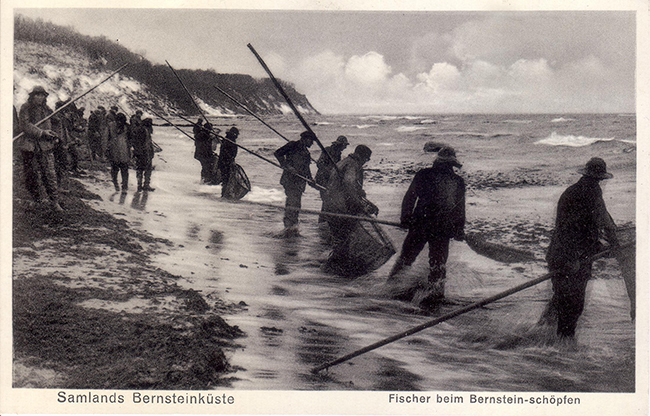
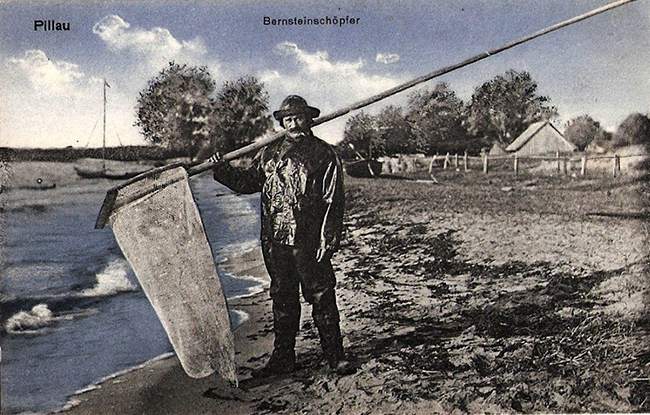
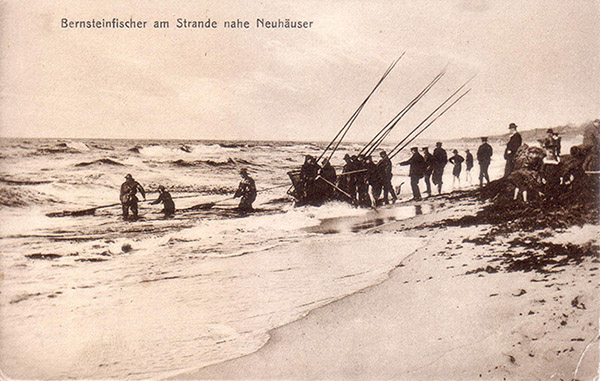
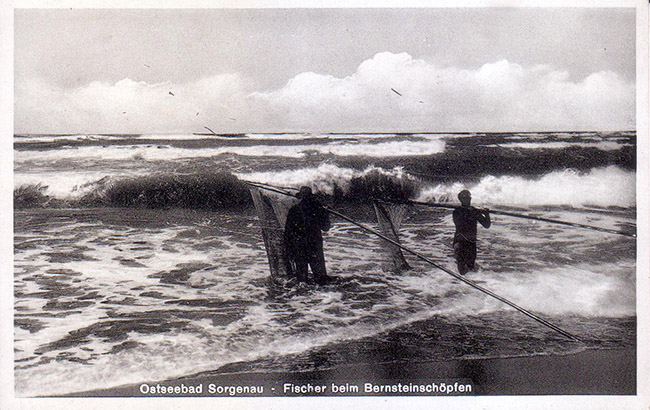
The simplest way to extract the sunstone was to simply collect it in places where the waves washed away the amber-bearing layer. Amber was collected in this way by the Prussians, from whom, along the Amber Road, which passed along the Vistula through the territory of today's Czech Republic and Austria, amber reached the Roman Empire and further, Egypt. It is believed that over several thousand years, more than 125 thousand tons of Baltic amber were mined.
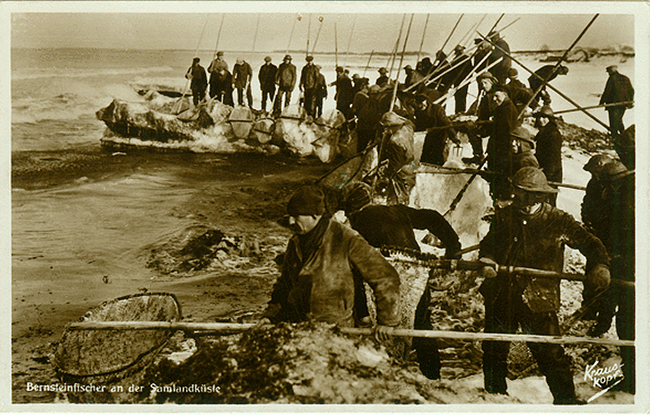
With the arrival of the Teutonic Order in East Prussia, the knights could not pass by the benefits that trade in the sunstone brought. The Order established the amber regalia (Bernsteinregal - amber regalia, amber privilege) - a monopoly on the collection and sale of amber (by the way, there was a similar monopoly on sturgeon fishing). The commander of the Lochstedt castle also held the position of Bernsteinmeister. People subordinate to him controlled the collection of amber on the coast from Pillau (Baltiysk) to Rauschen (Svetlogorsk) and bought it from collectors. Illegal collection was prohibited. Violators faced punishment up to and including the death penalty. An old German engraving depicting the collection of amber also depicts a gallows. There will be a separate story about the amber regalia .
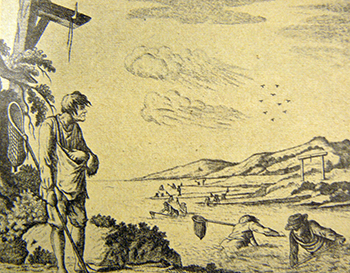
After the abolition of the order, the residence of the Bernsteinmeister was moved to Germau (now Russkoe), not far from Palmnicken (Amber). Soon the so-called "Amber Court" was moved there. By the way, on the outskirts of Germau there is the Gallows Hill (Galgenberg). The name speaks for itself.
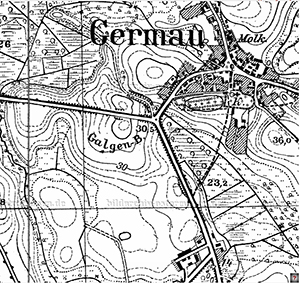
Centuries have passed, but amber fishers are still engaged in their simple trade. During winter storms, dozens, if not hundreds of "fishermen" freeze their, um... feet in the Baltic Sea. Each of them hopes that he will be lucky and today he will catch such a piece of amber, the likes of which the world has never seen before.





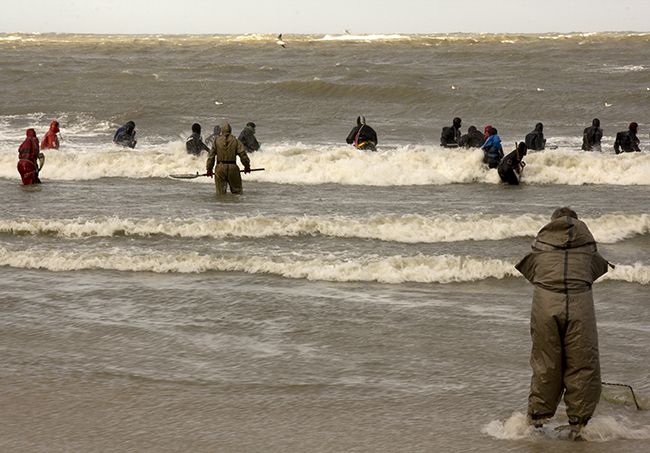
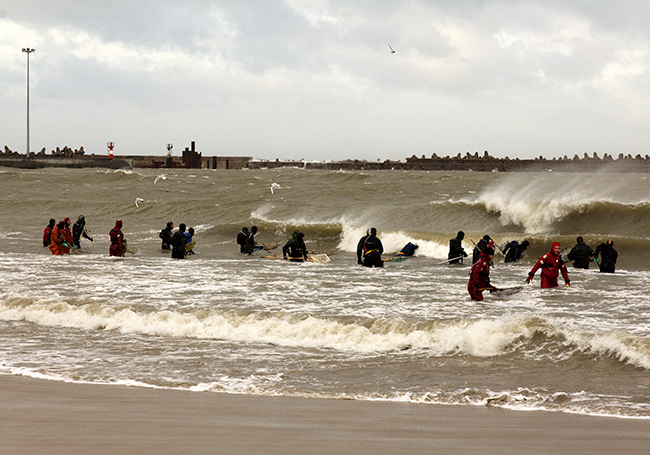
UPD 01/15/2022. In modern Russia, illegal amber mining is a criminal offense. In accordance with Art. 7.5 of the Code of Administrative Offenses of the Russian Federation "Unauthorized mining of amber, jade or other semi-precious stones", illegal mining, storage, transportation or sale of raw amber or products made of amber is punishable by a fine of up to half a million rubles (for individuals) with confiscation of the mining funds.
If a person engaged in illegal amber mining has already been subject to administrative punishment (i.e. if the collector was detained for amber mining again), then in accordance with Article 255 of the Criminal Code of the Russian Federation "Violation of the rules for the protection and use of mineral resources", he may face punishment up to 2 years' imprisonment and a fine of up to 200,000 rubles. If the cost of illegally mined amber exceeds 1 million rubles (large amount), the punishment may be imprisonment for up to 4 years with a fine of up to half a million rubles.
Every year, dozens of divers engaged in illegal amber mining in the Baltic Sea are detained in the Kaliningrad region.
As we can see, we have not yet reached the strictness of the Order's times. Life is not taken away for illegal extraction, thank God. And collecting amber on the beach is still permitted.
